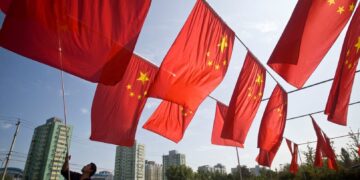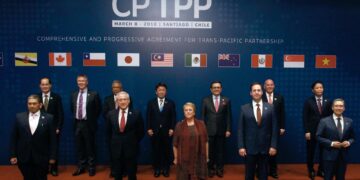By Weining Hu
In December 2016, the National People’s Congress promulgated China’s first Environmental Protection Tax Law (the EPT Law), replacing the existing Pollutant Discharge Fees (PDF) system in a bid to strengthen the enforcement of environmental regulations. The EPT Law provides guidelines for levying taxes on entities that emit air and water pollutants, solid wastes, as well as noise pollution, and will come into effect on January 1, 2018. Major contents of the EPT Law, such as taxable items, tax rates, and specification of taxpayers are largely consistent with the existing PDF system. However, changes concerned with tax incentives and administrating authorities significantly differ from the existing law. Given the EPT Law’s impact on China’s tax system, enterprises producing contaminants, as well as taxpayers and new market entrants need to understand the new developments in order to better prepare for future compliance requirements.
Environmental Protection Tax Law versus the Pollutant Discharge Fee system
Taxpayers: As stipulated in the EPT Law, taxpayers are defined as enterprises, public institutions and other business operations that directly discharge taxable pollutants within the territory of China. The EPT Law targets only operators associated with business activities, not individuals or non-business related entities, such as government institutions and the PLA. The meaning of “direct discharge” underscores the geographical location of where pollutants can be discharged. If a company discharges contaminants into open environment where no purification treatment exists, such activity is deemed as violation of the EPT Law. The EPT Law specifies that those discharging pollutants into urban sewage treatment plants and solid waste treatment facilities are exempt from paying tax, whereas factories that discharge pollutants into industrial discharge sewage treatment plants will be subject to taxation.
Taxable items: The EPT Law specifies four categories of taxable pollutants: air, water, solid waste, and noise. An appendix to the EPT Law, the List of Taxable Pollutants and Their Equivalent Volume, provides a comprehensive list of taxable items, which enterprises can use to ascertain the tax standard, and estimate payable tax before the law enters into force. It is noteworthy that certain types of pollutants are exempt from taxation, including pollutants discharged from agricultural production, motor vehicles, ships, aircraft, and legitimate urban sewage treatment plants. Carbon dioxide (CO2), which was debated during the drafting process, is not included on the pollutant list in the EPT law. With improved environment monitoring technology and knowledge, the government may adjust the current taxable scope when it feels it has reached sufficient capacity.
Tax calculations: The EPT calculation mechanism is basically consistent with the PDF system. Tax is calculated based on the volume of the pollutants discharged, multiplied by the respective taxable item’s EPT tax rate.
Two calculation rules are noteworthy. First, the EPT Law provides a minimum tax rate for each pollutant category. The law also grants provincial governments discretion to adjust the applicable tax rate up to ten times the national standard level. Provincial governments may make adjustments based on their respective environmental capacity, economic growth goal, and other development indicators. All adjustments are subject to approval by the Standing Committee of the National People’s Congress. Second, not all air and water pollutants discharged are subject to taxation. For each discharge outlet the bureau taxes the top three air pollutants, the top five items in the first class water pollutant, and the top three items of the other classes. For further instructions on pollutant tax calculation, please refer to our previous article on the EPT Law.
Preferential tax treatments and governing bodies
Preferential tax incentives: The EPT Law rolls out two tax breaks to encourage polluters to reduce emissions of contaminants. If the pollutant emissions are 30 percent less than the permitted pollutant disposal standard, polluters can get a 25 percent cut from the payable amount. If the pollutant emissions are 50 percent less than the stipulated standard, a 50 percent cut from the payable amount will be granted to the subject company.
Collection and administration: The EPT Law grants both tax bureaus and environmental protection authorities the power to enforce new regulations. While tax authorities are in charge of tax collection, the environmental protection authorities are responsible for monitoring pollutants and providing corroborated statistics, helping the former to supervise tax declarations. Related authorities are currently drafting detailed regulations for implementing the EPT Law. Guidelines concerning how to monitor pollutants, how to collect taxes, and how to deal with appeals by taxpayers are still in the drafting process. It is recommended that enterprises keep up to date with the ongoing regulatory changes.
Key takeaways
With changes in China’s tax system, both new market entrants and consolidated foreign investors should identify whether their invested projects are liable to pay environmental taxes under the EPT Law. Foreign investors also need to pay attention to updates concerning implementing regulations and adjusted tax rates set forth by corresponding provincial governments in the operating locations. Since the implementation of EPT Law relies heavily on applications of pollutant monitors, there are business opportunities for those who provide environmental protection services or those who possess pollutant monitor technologies.
About the author: This article first appeared in China Briefing by Dezan Shira & Associates, a specialist foreign direct investment practice, providing corporate establishment, business advisory, tax advisory, and compliance, accounting, payroll, due diligence, and financial review services to multinationals investing in China, Hong Kong, India, Vietnam, Singapore and the rest of ASEAN. For further information, please email [email protected] or visit www.dezshira.com.






























